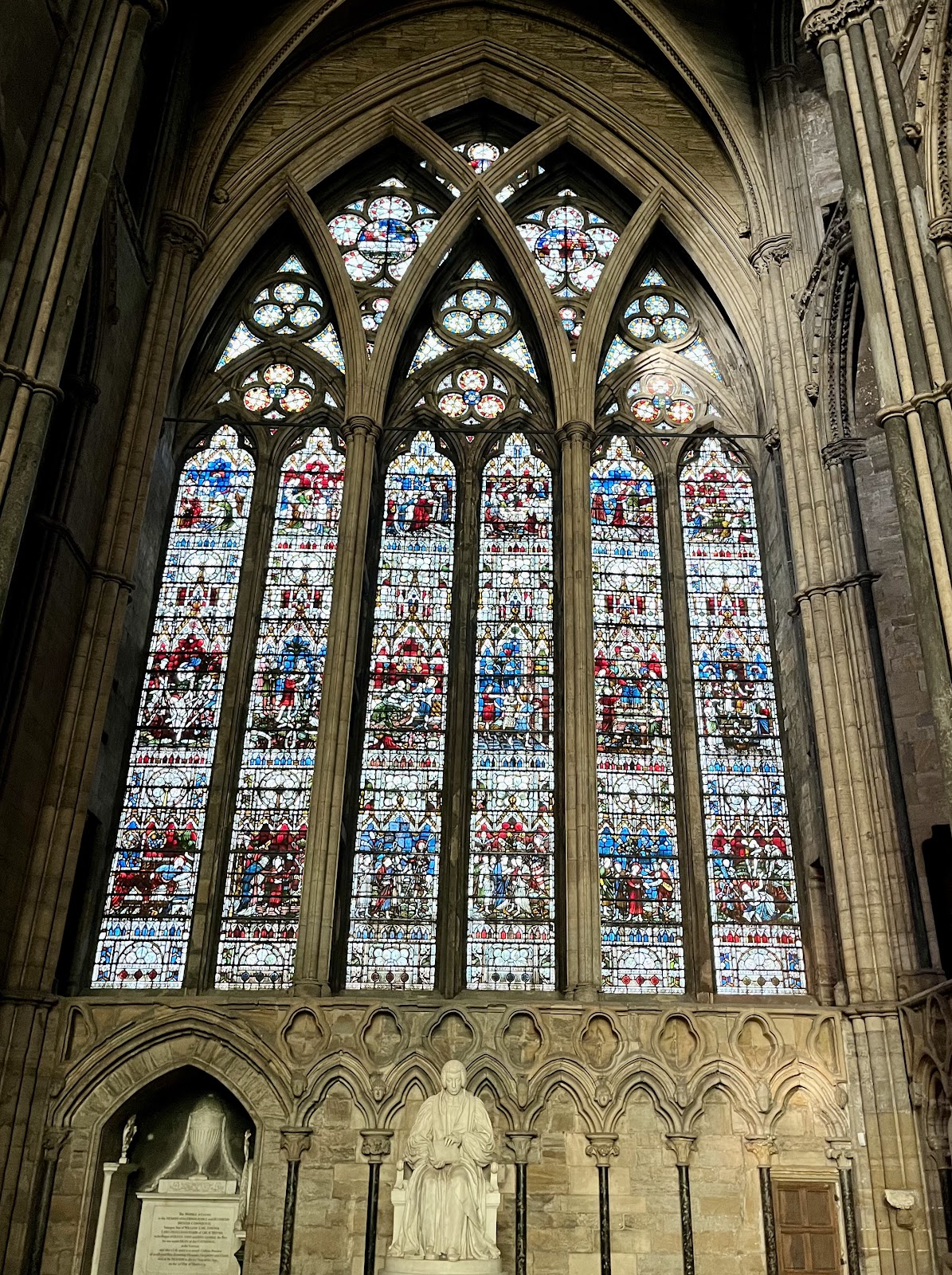I was in Durham today en route to Middlesborough for tomorrow's Battleground wargames show. I haven't been for many years, and its main attraction, the cathedral, isn't a typical reason for me to visit.
However, Durham is a bit different because it was the home of the Prince Bishops, who were ecclesiastical and temporal leaders of the region in medieval times. Possibly the most famous, at least in Scotland, was Anthony Bec (or Bek), who served as the Prince-Bishop of Durham from 1283 to 1311. His dual role made him one of the most influential figures in northern England during his time, as he was Edward I's right-hand man in Scotland.
Bek was just as happy deploying the mace as the crucifix. Taking part in Edward's campaigns in Scotland, the bishop received the surrender of King John I of Scotland at Brechin in 1296 and led one division of the English army at the Battle of Falkirk in 1298.
The cathedral is a magnificent example of a Norman church, particularly the ceiling and stained glass windows.
No one knew if Bek's tomb was in the cathedral, so I couldn't kick it! He is listed on the wall plaque.
The cathedral might be familiar to Harry Potter fans, as it was used in several films.
There is a fine chapel for the local regiment, the Durham Light Infantry, and a stone outside lists the VC winners.
The museum is also worth a visit. It houses a 17th-century edition of Bede's history, an important, if less-than-objective, primary source for early English history. They also have a rare falchion sword. No photos are allowed in that section, but you can read the story here.
The Norman castle has been built over, although you can see the outline. It is used by the university today and must be a great place to study history.
The market square has a giant statue of Charles William Vane, 3rd Marquess of Londonderry. As Charles William Stewart, he was a cavalry commander in the Peninsular War, both under Moore and Wellington. He didn't get on well with Wellington, which was hardly unusual. On his return, he had a diplomatic and political career. His statue is here because he later became Earl Vane and Viscount Seaham of Seaham in the County Palatine of Durham.
Durham is an attractive city to walk around, with several decent bookshops and tea rooms. I may have made a few purchases! A quick half with an old pal who now lives there and on my way. I am looking forward to Battleground tomorrow.











No comments:
Post a Comment